Highly Flexible Structure
Investigation of highly flexible, deployable structures: review, modelling, control, experiments and application
No´emi Friedman
Budapest University of Technology and Economics (BME) Department of Structural Engineering, Faculty of Civil Engineering Rakpart 3. Budapest, Hungary, H-1111

Fig. 2.9: a) Retractable roof of the Komjádi swimming pool [Komjádi]; b) Qi Zhong stadium (architect: Mitsuru Senda), [Ezinemark]
In the following thesis, an extensive review on different transformable systems used in architecture and civil engineering is given.
After the review, structures undergoing large displacements and instability phenomenon were highlighted. The main goal of the dissertation was to investigate the general behavior of a specific, immature self-deploying system, the antiprismatic structure proposed by Hegedűs.
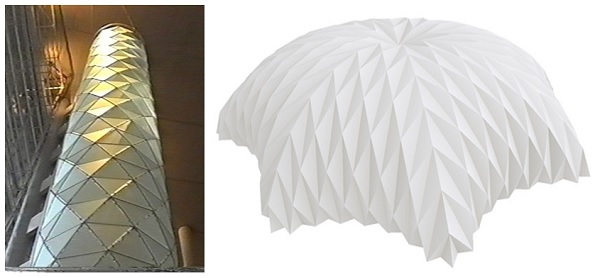
Fig. 2.11: Foldable tube (exhibition object) and dome (paper model) with the Yoshimura pattern [Yoshimura]
The emphasis was mainly taken to the analysis of the packing behavior. First, a simplified planar model was identified sharing similar, highly nonlinear packing behavior.
For both the 2D and the 3D structures numerical simulation of the packing was performed with different type of controls and the results were confirmed by analytical investigations.
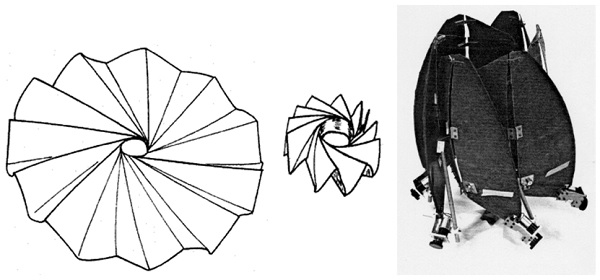
Fig. 2.12: Solid Surface Deployable Antenna and its wrapping fold pattern by the former Deployable Structures Laboratory by Guest and Pellegrino [DSL]
The research clarifies the mechanical behavior of the chosen system, provides tools to simulate the packing of the structure, options for control, and gives very simple approximations for main mechanical characteristics of the antiprismatic system in order to facilitate preliminary design and verification of the numerical results.
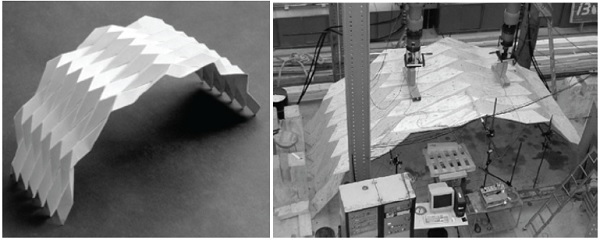
Fig. 2.13: Cylindrical paper and laminated timber model with the Miura pattern [Buri and Weinand, 2008]
The significance of snap-back behavior, occurring at the force-displacement diagram during packing was analyzed. Within the framework of the thesis a novel type of system, slightly deviating from the original one was also investigated.

Fig. 2.21: a) Deployable mast controlled by active and passive cables by the former Deployable Structures Laboratory; b) foldable bridge and c) deployable dome by ATAKE Space Design Lab. Co. in the Hanamizuki Park, Japan [Atake]
For the specific systems, small physical models were built and presented in this work, which led to the proposal of a novel type of expandable tube.
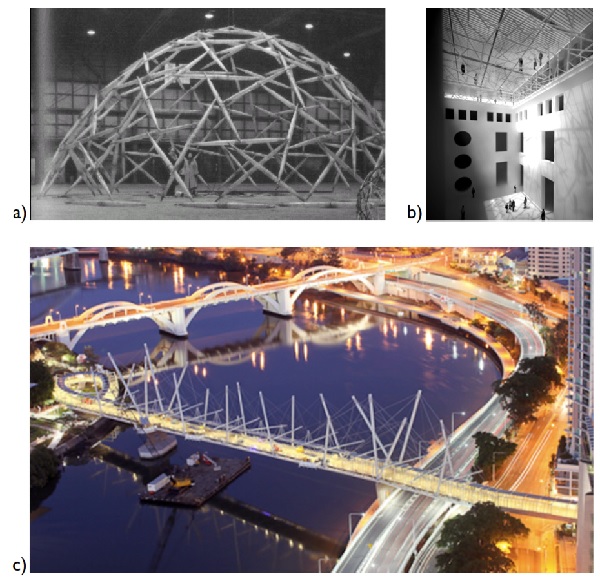
Fig. 2.37: Architectural applications: a) Geodesic tensegrity dome by Fuller, 1953 [Gengnagel, 2002] b) tensegrity roof design of ABDR Arch. Association [ABDR] c) Tensegrity Bridge (Kurilpa Bridge, Brisbane; designer: Cox Rayner Architects and Arup Engineers) [Anupam]
An attempt was given to provide ideas for application of antiprismatic structures by combining the investigated system and different learnt existing systems from the architectural review.
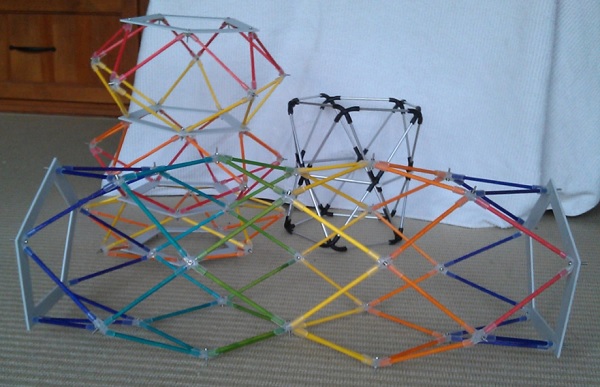
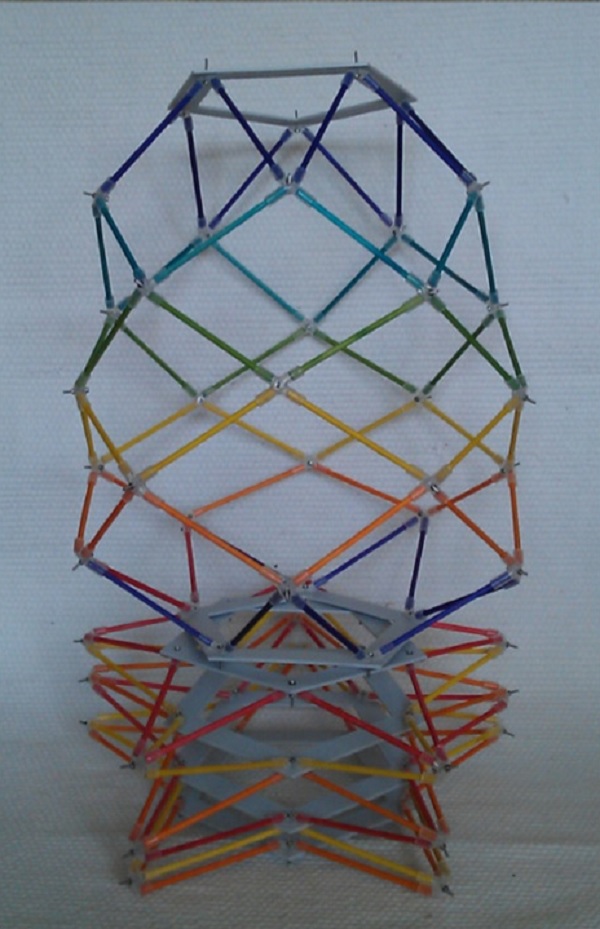
Fig. 5.1: Physical models
Observing nature, several transformable structures can be found, like the extensible worm, deployable leaves and wing of insects, expanding virus capsid, not to mention the movable structure of our own, human body.
For centuries several small-scale man-constructed deployable structures have been constructed too, such as umbrellas, chairs, fans etc.
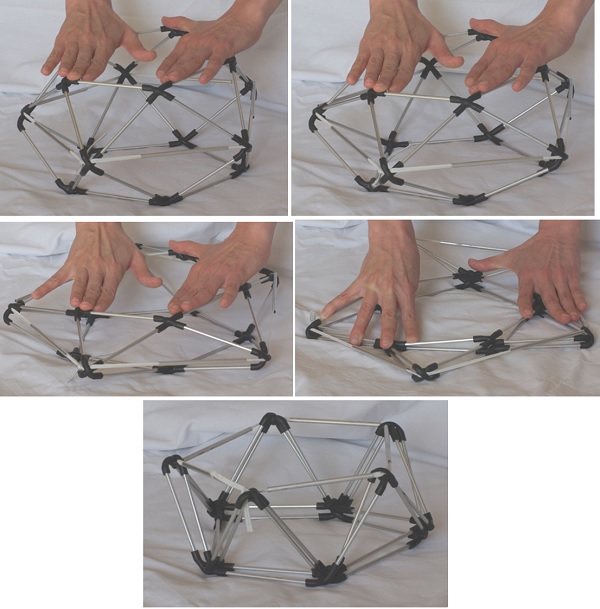
Fig. 5.2: Difficult control of non-stiffened pentagonal unit
For the last four-five decades, advanced man-made structures have appeared mainly for spatial engineering applications like for booms, solar arrays, antennas, reflectors, as the volume and the weight of a structure to be transported to space is crucial.
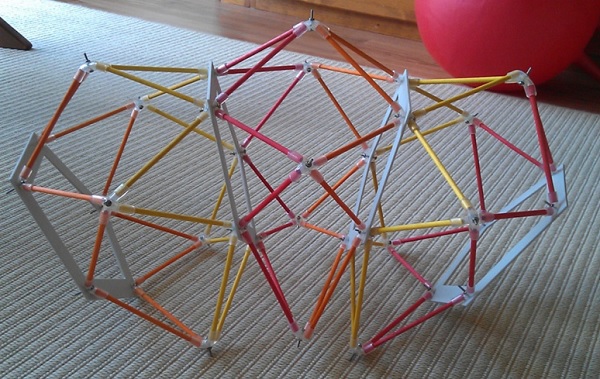
Fig. 5.3: Asymmetrical freedom of motion
On earth, until recent times, only smaller structures like tents, yurts and shelters had been constructed for architectural purposes.
Confirming to the novel conceptions of the 21th century and due to available numerical and robotics technologies, advanced transformable structures are already applied in civil engineering and architecture.
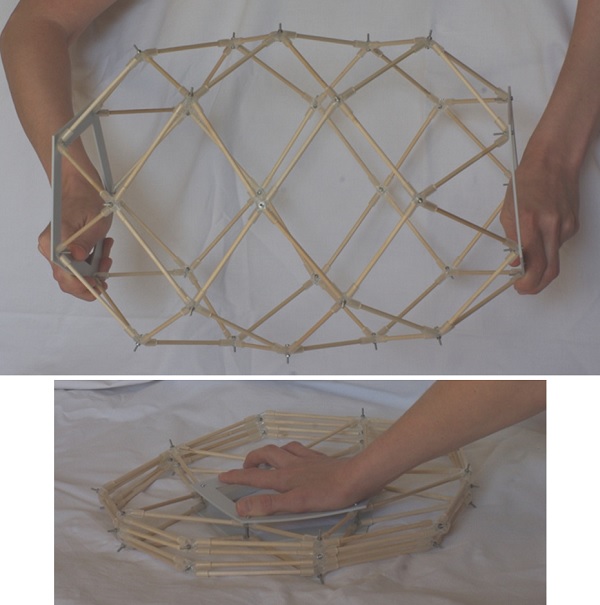
Fig. 5.5: Non-stiffened pentagonal structure ― novel type of deployable structure
Structures used for off-shore industry and light deployable structures used for modern architecture can be mentioned among these.
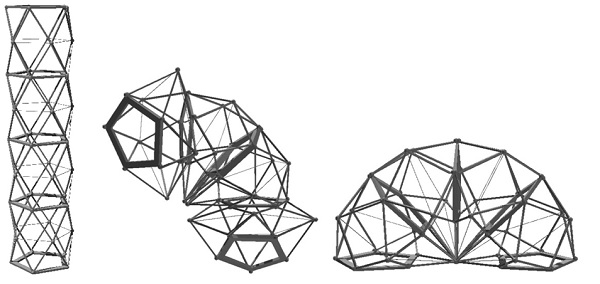
Fig. 5.8: Shape morphing antiprismatic arm [Friedman et al., 2011/4]
These structures are designed to undergo very large displacements and remain fully operational. Often the structures of that kind can integrate a multibody system or which facilitates a construction phase before being integrated in a structural assembly.
Modeling of the component of 3D frame-type flexible structures of this kind is nowadays under control thanks to the geometrically exact beam model; capable of representing large displacements and rotations, and solving the pertinent instability problems.




























Comments